In December 2009 Rab and Linda spent four days in Lorraine, France, researching 16th century stained glass that would have been familiar to Mary of Guise, the second wife of King James V of Scotland. | 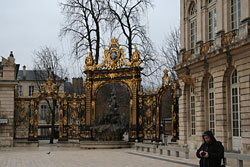 |
Two CVMA volumes by Michael Herald assisted us in identifying the churches that contained early 16th century stained glass. The research is part of Historic Scotland's refurbishment of the Royal Apartments of James V and Mary of Guise in Stirling Castle. | 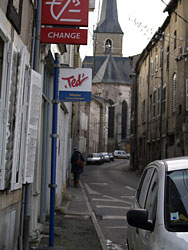 |
Our first visit was to the Basilica of St Nicholas de Port, which was built between 1481 and 1560 at the request of Rene II, Duke of Lorraine, grandfather of Mary of Guise. It contains magnificent windows by Valentin Bousch and Nicholas Droguet, who were patronised by the Guise family. | 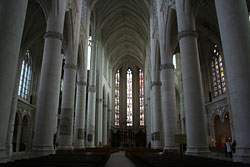 |
The great West Window was painted by Valentin Bousch around 1530. Unfortunately it was damaged in a deliberate fire in 1635, and again during the Napoleonic Wars, WW1 & WW2. However, original Guise heraldry still exists in the lancets and around the outsides of the Rose. | 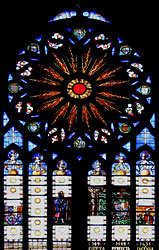 |
Wonderful examples of original 16th century Guise heraldry exists throughout the Basilica, such as this panel from the lower North Elevation. | 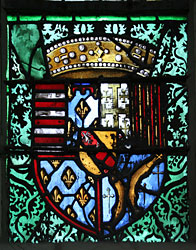 |
Other family ancestral heraldry, such as this panel showing the Arms of Valois, were also well documented and intact. | 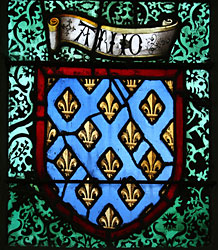 |
Stunning walls of plain geometric heraldic glass were also a revelation. The leading pattern appears to be specific to this region, and is prevalent from the 14th century onwards. This is a 19th century restoration of an earlier 16th century window. | 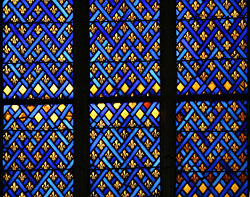 |
Other details of the Guise family heraldry were found throughout the region. This 16th century panel showing the Arms of Jerusalem is in the Musee de Lorraine in Nancy. | 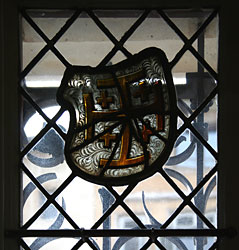 |
The Musee de Lorraine was originally the Ducal Palace of the House of Guise in the centre of Nancy. It was built at the same time as the Royal Apartments in Stirling Castle, and shows many stylistic similarities. | 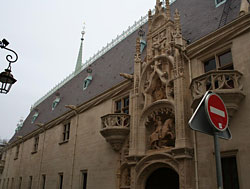 |
There is a large restoration program going on throughout the region of Lorraine, finally restoring many of the buildings which were damaged during WW2. The facade of the Musee has a fantastic sculpted entrance which has been recently restored. | 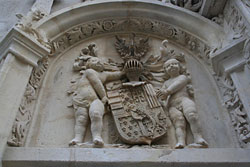 |
Two fat cherubs hold the Arms of Guise. | 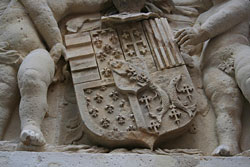 |
Throughout Nancy, the influence of the Guise as the Dukes of Lorraine is clearly visible, such as this Arms of Lorraine above the Toll Gate to the City. | 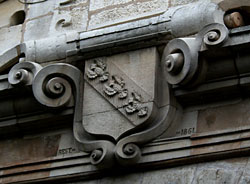 |
This stunning coat of arms is gilded polychrome stone, below an alter, in the Basilica of St Nicholas de Port. | 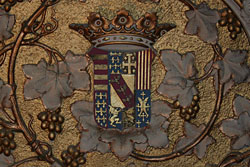 |
In the Basilica Saint Epvre, next to the Ducal Palace in Nancy, there are 18th century wall paintings throughout the church, depicting the numerous quarterings and marriages of the House of Guise and the Dukes of Lorraine. | 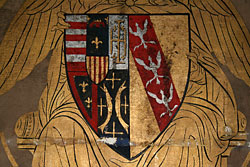 |
Our research took us to many tiny provincial churches, such as this one in Pulligny. Thank goodness for sat-nav! | 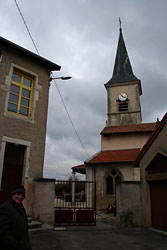 |
Despite it being freezing cold, and closed for the Festival of St Nicholas, one of our most important "finds" was the magnificent Cathedral in Toul. | 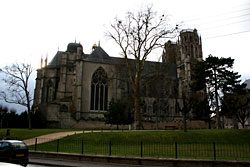 |
This medieval building was the centre of religious influence and worship for the region, and was midway between Nancy and Bar, where Mary of Guise was born. | 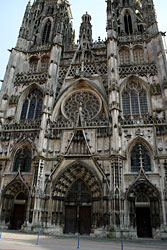 |
It has been badly damaged over the years due to numerous wars in the region, but it is being restored at present. Its plain geometric windows are authenticated in the CVMA volumes as late 15th century. | 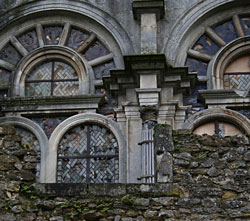 |
Other regional geometric leading patterns were seen in other churches, such as these two different 16th century patterns in Vezelise. | 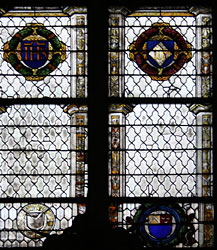 |
Other regional patterns, such as this one from St Nicholas de Port are more commonly found in Germany. It shows the clear stylistic influence that Germany played in the Alcase - Lorraine area. | 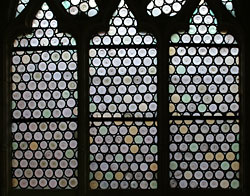 |
The painting style and detailing of the regional painters, such as Valentin Bousch and Nicholas Droguet were to be seen all over the region. They were patronised by many members of the Guise dynasty in the 16th century. | 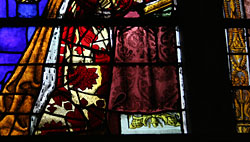 |
We were delighted to find a portait of Rab's dog "Eddie" at the feet of St Roch in the Basilica of St Nicholas de Port, painted by Valentin Bousch. Also of interest were the lead ties, coiled to support the saddle bar instead of copper wire. | 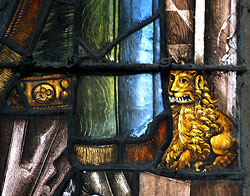 |